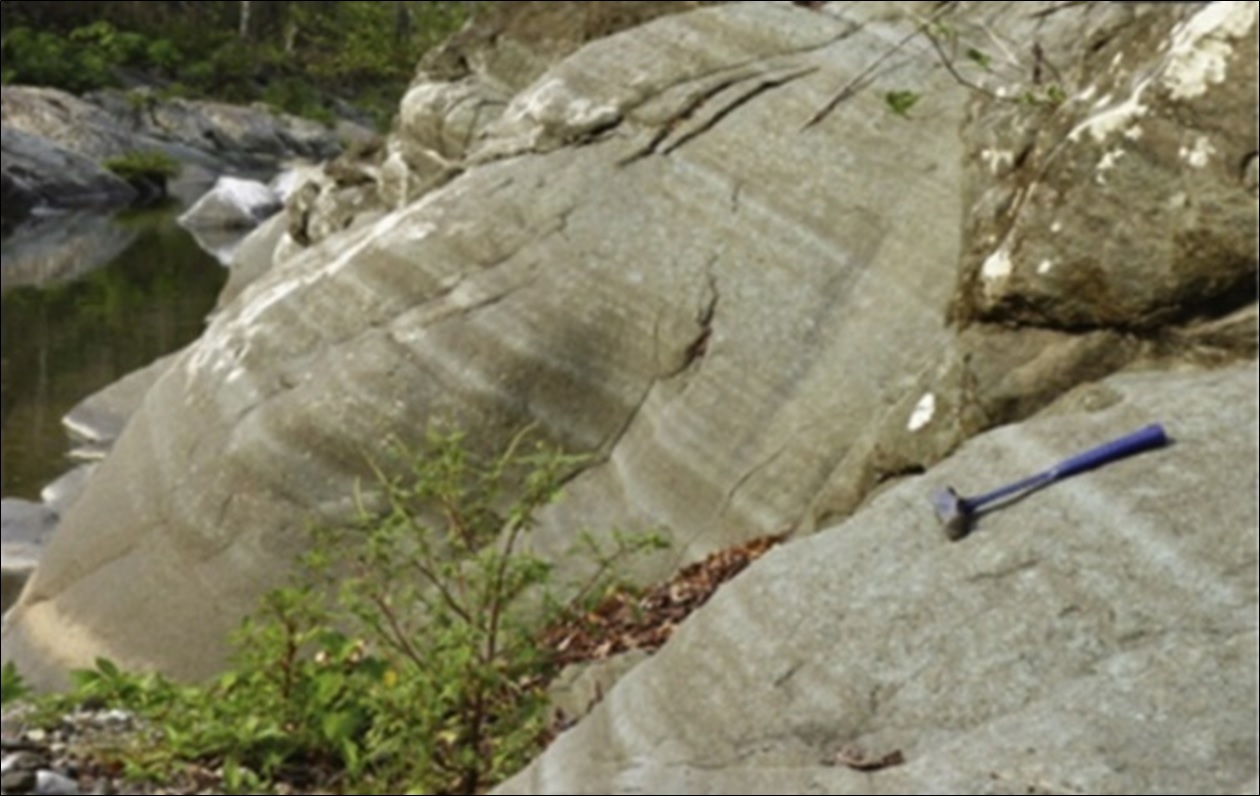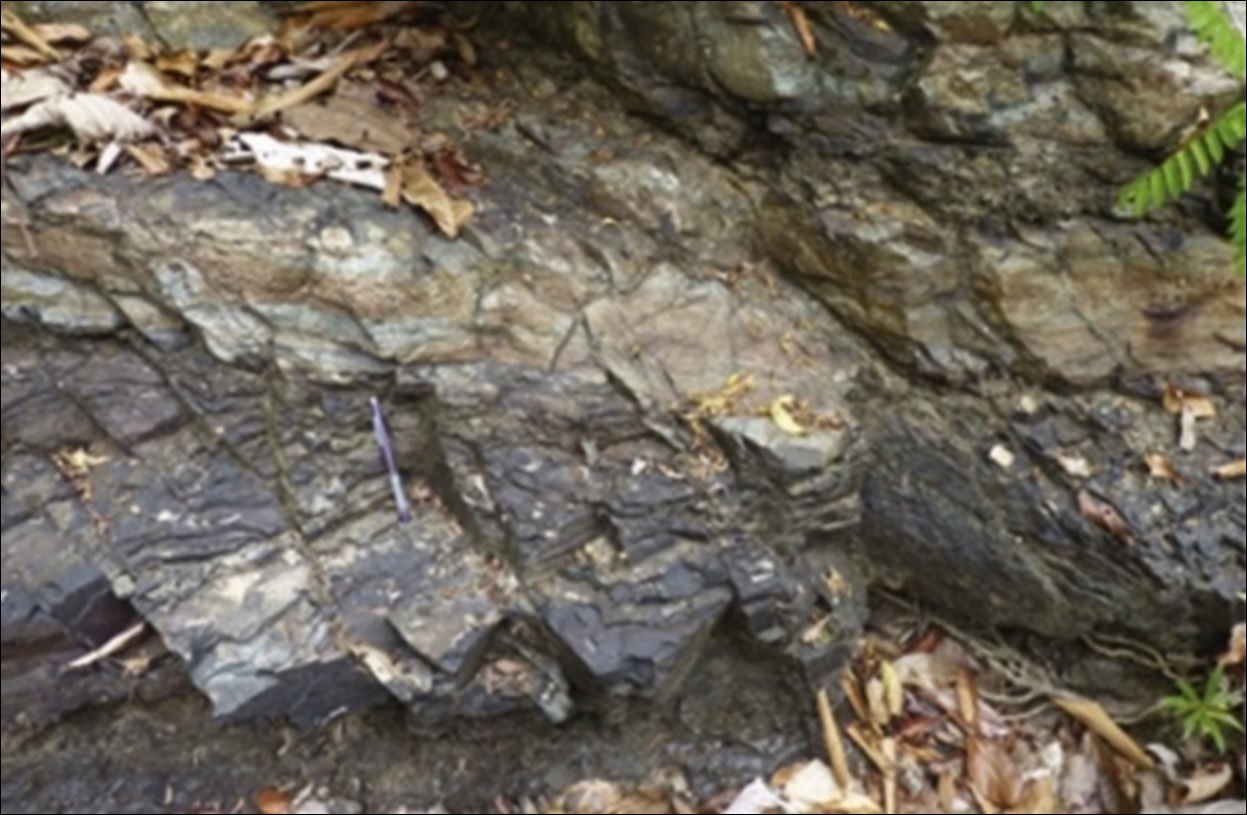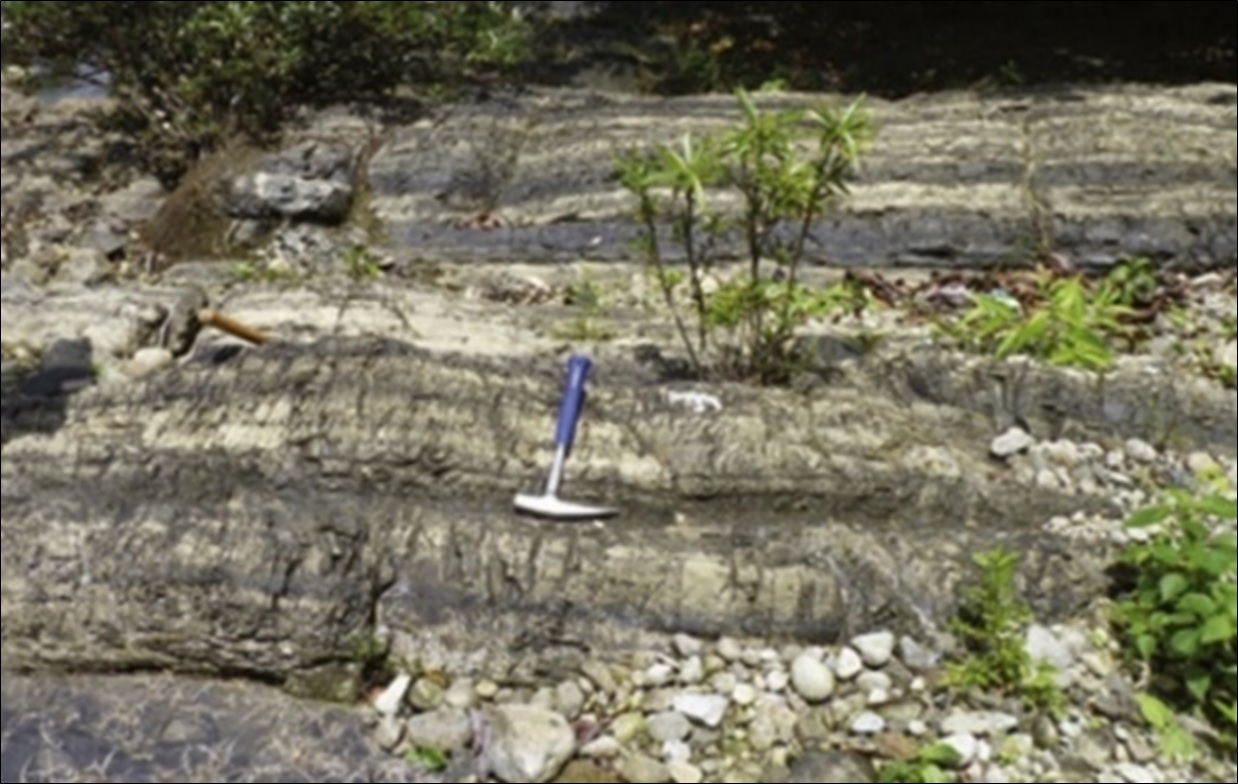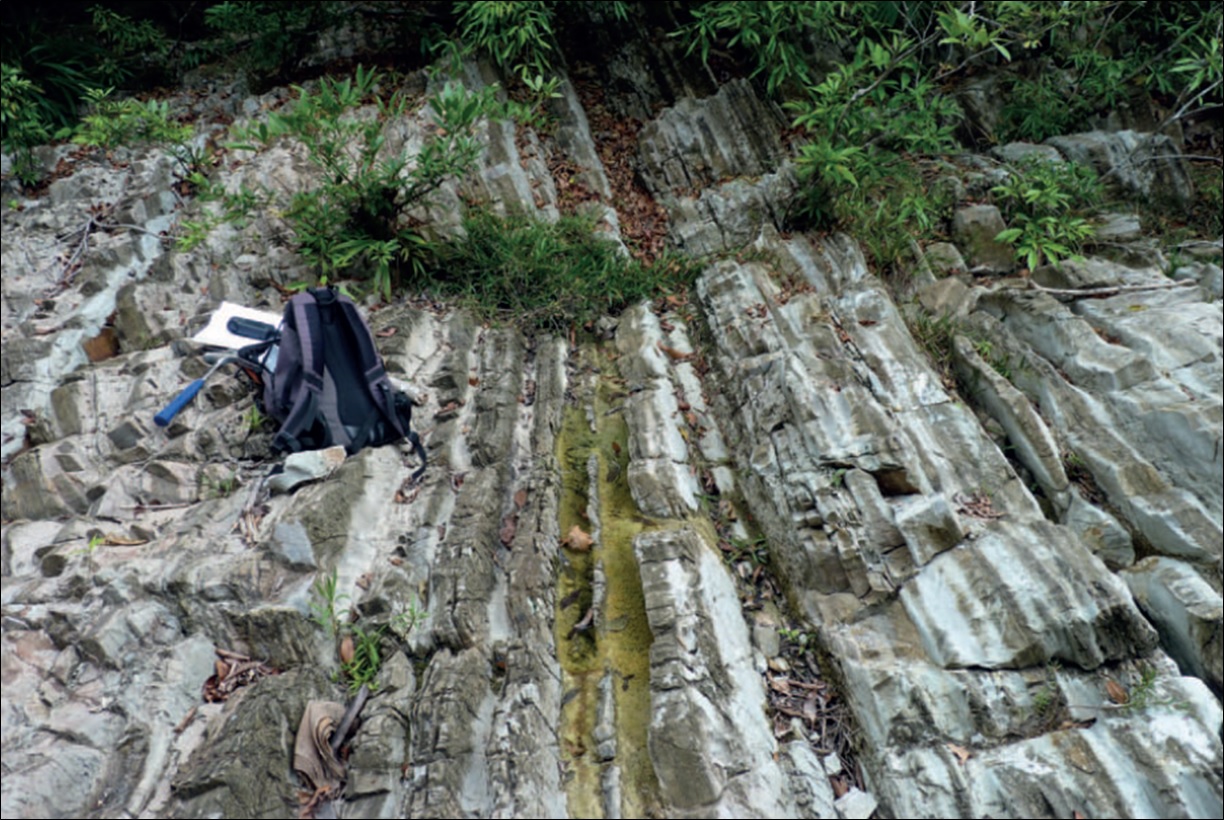Darien Fm
Type Locality and Naming
Occurs on the northeastern flank of the Chucunaque–Tuira Basin, in the fore-arc region and in the Majé Massif.
Synonym: Eocene units of the Darien Fm were first referred to as the Morti Tuffs, and Oligocene units (occurring only in the southwest of the Chucunaque-Tuira Basin) as the Pacific Tuffs (Bandy (1970); Bandy and Casey (1973)).
Lithology and Thickness
In the Majé massif, its stratigraphy and composition is described with (from oldest to youngest) abundant breccia and agglomerate, wackestone, blackish volcaniclastic sandstone, conglomerate (Figure 1), chert (Figure 2), dark green fine-grained and medium grained tuff, green pebble conglomerate and fine sandstone. In the upper part of this sequence, the rounded pebbles suggest a distant clastic source, such as the San Blas–Darien Massif. The abundance of Globigerina sp. fossils in the sandstone indicates an open pelagic marine paleo-environment. A calcareous unit, with conglomerate, black sandstone and gray to white medium-grained tuff unconformably overlies the oldest volcaniclastic unit of the Darien Fm. This calcareous unit suggests a hemi-pelagic depositional environment, and the nannofossil assemblages indicate a Late Oligocene–Early Miocene age (Figure 3; Figure 4). This calcareous unit could correspond to the old Aquaqua Fm, which was first named by Shelton (1952), and which is now referred to as the Aquaqua Member of the Darien Fm. Barat et al. (2014)
Thickness: up to ~ 1500 m
[Figure 1. Conglomerates with green weathered andesite pebbles in the Majé Massif, Darien Fm (8.93588°, −78.55220°, WGS84). Barat (2013) and Barat et al. (2014).]
[Figure 2. Green and red siliceous azoic cherts in the Majé Massif, Darien Fm (8.93013°, −78.56126°, WGS84). Barat (2013) and Barat et al. (2014).]
[Figure 3. Gray and white fine-grained and medium-grained calcareous tuffs of the Late Oligocene, Aquaqua Mb, Darien Fm, (8.89477°, −78.52817°, WGS84); Barat (2013) and Barat et al. (2014).]
[Figure 4. Layered micritic limestone outcrop in the Curti river of the Majé Massif, Late Oligocene. Barat (2013).]
Relationships and Distribution
Lower contact
Upper contact
Regional extent
GeoJSON
Fossils
Age
Depositional setting
Additional Information
- References: Esso Exploration and Production Panama (1970, 1971a, 1971b); Bandy (1970); Bandy and Casey (1973); Ministerio de Comercio e Industrias (1991); Coates, Anthony G. et al. (2004); (APP-B4 and APP-B3); Barat et al. (2014);
- In the Majé Massif, mesocratic to leucocratic dykes and andesites to dacites cross-cut the San Blas Complex Fm and the Darien Fm. These andesitic dykes are fine grained with phenocrysts of amphiboles and plagioclases. A few dacitic dykes are rich in quartz and show flow structures (Barat et al. (2014)).



